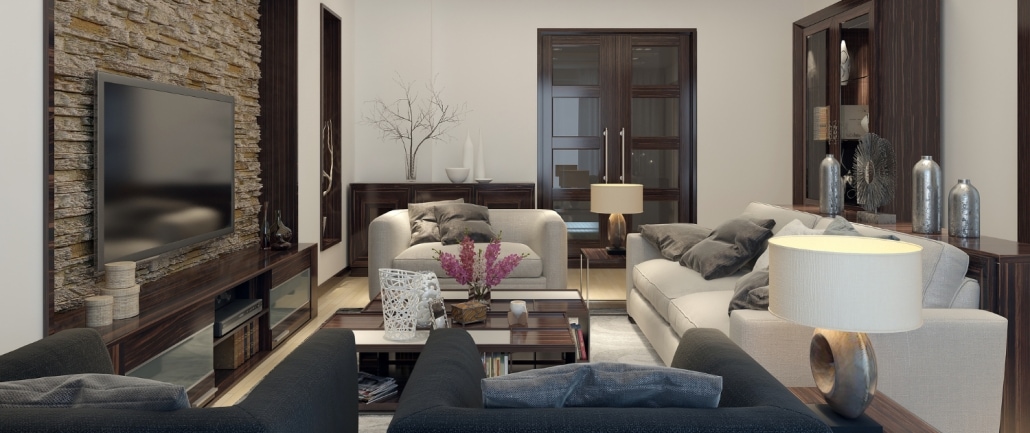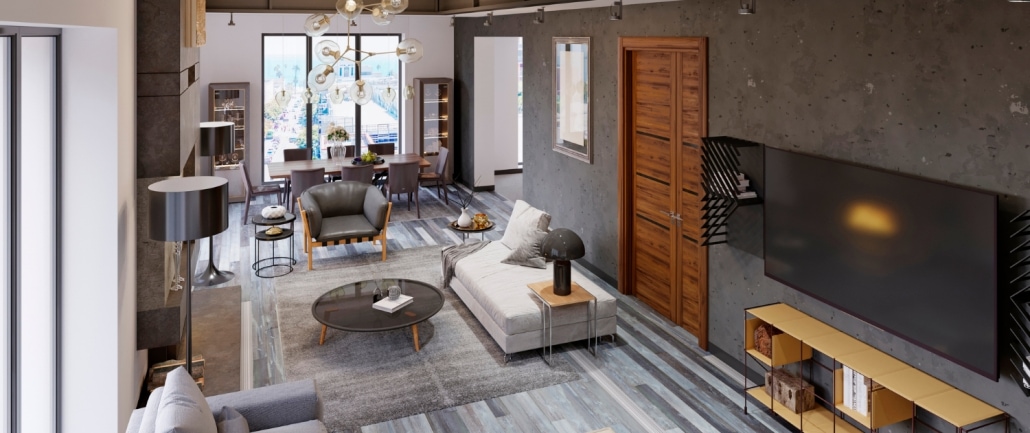How High Should a TV Be Mounted? – Expert Guide for TV Placement
Imagine settling into your couch after a long day, ready to unwind with your favorite TV show. But instead of relaxation, you’re met with discomfort. You’re craning your neck, squinting your eyes, and shifting in your seat, all because your TV isn’t mounted at the right height. It’s a common scenario that many of us overlook, but the height at which your TV is mounted can significantly impact your viewing experience. This guide delves into the art and science of TV placement, exploring how you can enhance your viewing comfort and transform your TV watching into a truly immersive experience. So, sit back, relax, and let’s elevate your entertainment game.
| Key Takeaways |
|---|
| 1. The height at which your TV is mounted can significantly impact your viewing comfort and experience. |
| 2. The ideal TV mounting height is at eye level when seated, typically about 42 inches from the floor to the center of the TV. |
| 3. Factors influencing the ideal TV height include the size of the TV, the distance from the TV, eye-level considerations, and room layout. |
| 4. Mounting a TV comes with several benefits, including space-saving, aesthetic appeal, and optimal positioning for viewing. |
| 5. Potential drawbacks of TV mounting, such as installation challenges and difficulty in changing the TV’s position, can be mitigated with professional installation and high-quality mounts. |
| 6. The perfect TV viewing setup is about achieving a balance between technical guidelines, personal comfort, and the constraints of your living space. |
Importance of TV Placement
When it comes to home entertainment, the placement of your television can significantly impact your viewing experience. It’s not just about looks or saving space. The height at which your TV is mounted is crucial in ensuring the best viewing comfort and minimizing strain on your neck and eyes.
Impact on Viewing Experience
Imagine watching your favorite show, but instead of immersing yourself in the plot, you’re distracted by an uncomfortable crick in your neck. Or perhaps, you’re straining your eyes because your TV is mounted too high or too low. These scenarios underscore the importance of proper TV placement. It enhances your viewing experience, making your binge-watching sessions or movie nights more enjoyable and comfortable.

Factors Influencing TV Height
Size of the TV
The size of your television is crucial in determining the ideal mounting height. Larger screens naturally require more space and may need to be mounted higher to accommodate their size. However, it’s essential to remember that bigger isn’t always better. A TV that’s too large for a room can overwhelm the space and may not provide the best viewing experience. The old saying “bigger is better” ends up being a pretty solid guideline, but it’s also important to consider the dimensions of the room and the distance from the couch.
Distance from the TV
The distance between your seating area and the TV significantly influences the height at which the TV should be mounted. For the most detailed 4K picture, a viewing distance between 1 to 1-1/2 times the screen size is recommended. This distance ensures you can appreciate the image’s full quality without straining your eyes.
Eye Level Considerations
The ideal height for your TV is at eye level when you’re seated. This position reduces neck strain and provides the most comfortable viewing experience. However, everyone’s eye level is different, and it can vary depending on whether you’re sitting upright or reclining. Therefore, it’s important to consider the typical viewing positions in your household when mounting your TV.
Room Layout and Furniture Placement
The layout of your room and the placement of your furniture also play a significant role in determining the height of your TV. The screen should be mounted at eye level if your seating is directly in front of the TV. However, if your seating is off to the side, you might want to consider a full-motion mount that allows you to adjust the TV’s position for optimal viewing from different angles.
Guidelines for Mounting TV
Ideal Height for TV Mounting
The ideal height for mounting your TV is at eye level when you’re seated. This is typically about 42 inches from the floor to the center of the TV. However, this can vary depending on your seating height and personal preference. The key is to ensure that you don’t have to crane your neck up or down to watch your favorite shows comfortably.
Adjustments for Reclining Positions
If you often watch TV in a reclining position, you might want to mount your TV slightly higher than the standard eye level. This is because your eye level changes when you recline, and a higher mount can provide a more comfortable viewing angle. However, be careful not to mount it too high, as this can lead to neck strain over time.
Special Considerations for Mounting Above a Fireplace
Mounting a TV above a fireplace is a popular option for many homeowners. However, this often requires the TV to be mounted higher than the ideal viewing level. If you choose this option, consider using a tilting or full-motion mount that allows you to adjust the viewing angle. This can help mitigate the effects of the higher mount and provide a more comfortable viewing experience.
Mounting in Different Rooms (Bedroom, Entertainment Room)
The room you mount your TV in can also affect the ideal mounting height. In a bedroom, for instance, you might be viewing the TV from a lying position, which would require a higher mount. On the other hand, in an entertainment room with tiered seating, the TV might need to be mounted lower to be at eye level with the viewers in the front row.

Pros and Cons of TV Mounting
Benefits of Mounting a TV
Mounting a TV comes with several benefits. It can save space, especially in smaller rooms, and provide a modern look. It also allows for optimal positioning of the TV for the best viewing experience. Additionally, a mounted TV is less likely to be knocked over or damaged, providing a level of safety, especially in homes with children or pets.
Potential Drawbacks and Solutions
Despite its benefits, TV mounting does have potential drawbacks. It requires installation, which can be a challenge for some. It also makes it more difficult to change the TV’s position or replace it with a new one. However, these issues can be mitigated by using a professional installation service and choosing a high-quality mount that allows for easy adjustments.
Conclusion
The Science Behind TV Placement
While we’ve discussed the importance of individual comfort and preference in TV placement, it’s worth noting that there’s a science behind it too. Research shows that our eyes are designed for a downward gaze, and straining them to look upward for extended periods can lead to discomfort. This is why the “eye-level” rule is widely recommended.
The Role of Technology in TV Placement
As technology evolves, so do our viewing habits and options for TV placement. For instance, adjustable mounts have made it possible to alter the screen’s angle, accommodating various viewing positions. Similarly, advancements in screen technology mean less glare, allowing for more flexibility in TV placement.
Final Thoughts
In the end, the perfect TV viewing setup is about achieving a balance between technical guidelines, personal comfort, and the constraints of your living space. It’s about creating an environment where technology enhances enjoyment rather than causing discomfort. So, as you decide on the perfect spot for your TV, remember to consider all these factors. Happy viewing!
FAQ
How high should I mount my flat-screen TV on the wall?
While it may vary depending on preference and specifics of your space, generally, the middle of the TV screen should be at eye level height from where you usually watch TV. This optimal height typically measures 42 to 56 inches from the floor to the center of the TV screen.
What is the right height to hang a TV in your bedroom?
Similar to the living space, the ideal viewing height in a bedroom setting is when the middle of the TV screen is at eye level from your viewing position in bed. Measure this height from your comfortable viewing angle and it’ll be the right height to mount your TV.
Why is the viewing angle important when deciding how high to mount a TV?
The viewing angle is critical because it can significantly impact the quality of the viewing experience. If the TV is mounted too high or too low, it might cause neck strain and unhealthy posture over long viewing sessions. Therefore, the optimal viewing distance and height, usually at eye level, is recommended when you mount the TV.
Do the size of your TV and the viewing distance matter when mounting?
Yes, the size of your TV and the distance from where you’ll be viewing it can impact how high you should mount it. The larger the TV, the more viewing distance you need. As a rule of thumb, a good viewing distance is around 1.5 times the diagonal measurement of your flat-screen TV.
Where should the TV wall mount be in relation to the center of the TV Screen?
When you’re hanging your TV, the TV wall mount should ideally sit somewhat below the center of the TV screen. That’s because when the TV is on the wall mount, the middle of your screen (the optimal viewing point) should be at your eye-level height.
How high should you mount a TV if on a TV stand?
If you’re placing a TV on a stand, the optimal height will depend on your seating height and your comfortable viewing angle. On average, the bottom third of the TV should land at eye level when seated.
What is the optimal TV mounting height in the living room?
In a living room where viewers tend to sit, a good rule of thumb is for the center of the screen to be around 42 inches or around eye level from the floor. However, the perfect height may vary based on your TV size, viewing distance, and seating height.
How to measure the height of hanging a TV?
To measure the height to hang a TV, first measure the distance from the floor to your eye level in your usual viewing position. This should be the approximate location of the center of your screen. Next, determine the center height of your TV by measuring half its size (since size is typically measured diagonally), and adjust your desired wall height accordingly.
What is the recommended height to mount a flat-screen TV on a wall in a kid’s room?
For a child’s room, the height should be lower such that the middle of the TV aligns with the child’s eye level when sitting or lying down. Keep in mind that the optimal height might change as the child grows so an adjustable mount would be helpful.
Does the ideal TV mounting height differ if I watch TV lying down vs sitting up?
The ideal mounting height might differ depending on whether you’re watching TV lying down or sitting up. That’s why it’s important to consider where and how you’ll most often be watching before you mount your TV. If you watch it lying down, the mount might need to be a bit higher than the standard height.


